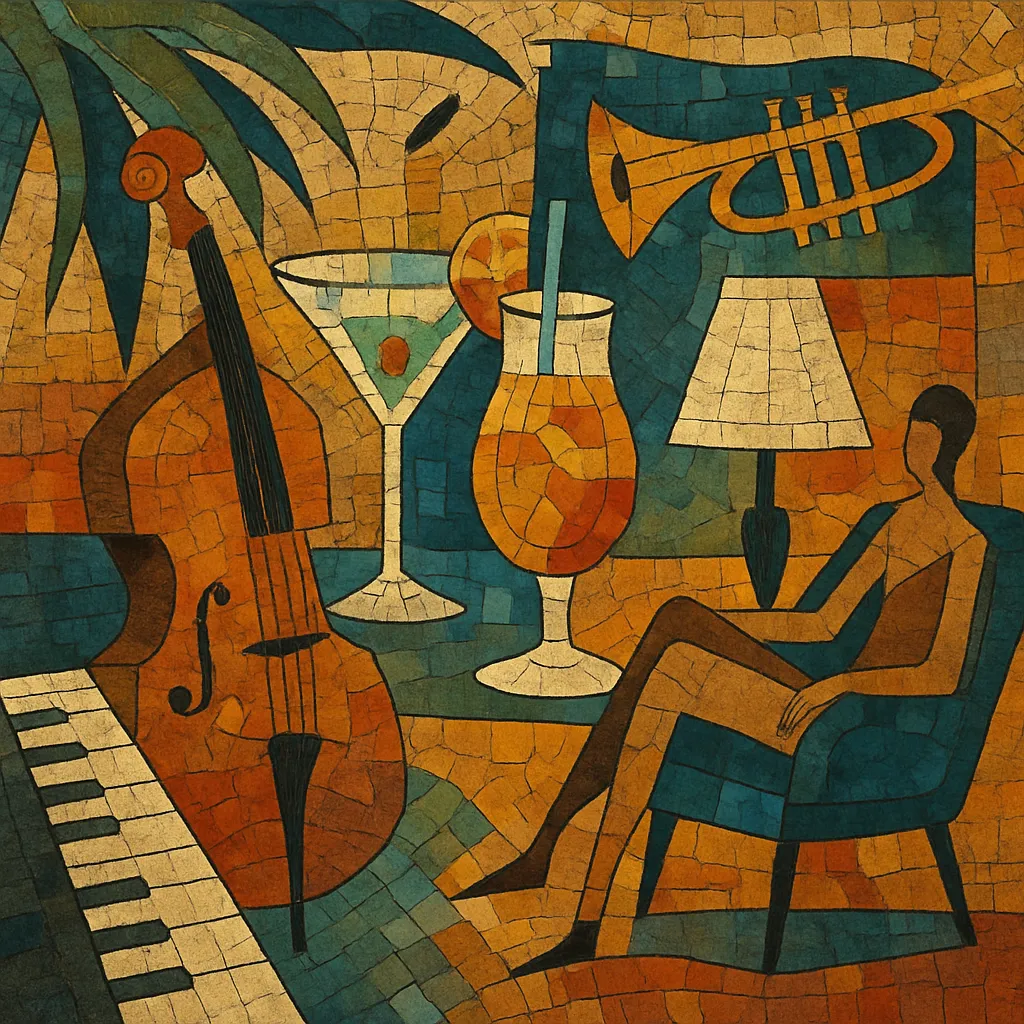
Cocktail nation is a 1990s retro-lounge revival that resurrected the suave, mid‑century “space-age bachelor pad” aesthetic of 1950s–60s lounge, exotica, and easy listening for contemporary audiences.
It pairs vibraphones, organs, bongos, brushed drum kits, and velvet strings with light jazz harmonies, Latin dance grooves (bossa nova, cha-cha-cha, mambo), and a winking, postmodern sense of kitsch. The mood is urbane and cinematic—martinis, tiki bars, hi‑fi stereo tricks, and cosmopolitan glamour—delivered with crisp production and often a knowingly nostalgic or ironic tone.
Cocktail nation draws heavily from the postwar lounge era when hi‑fi home stereos and stereo imaging turned listening into a lifestyle. Exotica bandleaders and arrangers experimented with vibraphone, marimba, bongos, lush strings, and sparkling brass; jazz harmonies were softened into easy listening, while Latin dance rhythms—mambo, cha‑cha‑cha, and later bossa nova—added a cosmopolitan pulse. The imagery was jet‑set modernism: tiki motifs, bachelor pads, and filmic elegance.
In the early–mid 1990s, indie labels, reissue campaigns, and club nights sparked a renewed fascination with this sound. Compilation series and reissues of mid‑century lounge and space‑age pop fueled curiosity, while new bands presented freshly written material in the old style. Acts blended lounge instrumentation with contemporary production, sometimes sampling vintage records and sometimes recording live in a classic studio manner. The movement’s tongue‑in‑cheek glamour and cocktail‑bar chic made it a natural fit for lounges, boutique hotels, and film soundtracks.
The scene spanned the United States, the UK, and Japan, overlapping with Shibuya‑kei, nu‑jazz, and the swing revival. Visuals—retro fonts, tiki iconography, mod fashion—were inseparable from the music. Some projects leaned more cinematic or orchestrated; others highlighted kitsch and stereo “ping‑pong” tricks; still others fused lounge with downtempo and light club grooves.
By the early 2000s the trend cooled as a headline movement, but its DNA persisted in nu jazz, electro swing, downtempo/chillout, and the broader nostalgia for mid‑century design and sound. Cocktail playlists remain staples in hospitality and lifestyle spaces, and the genre’s polished, playful sophistication continues to inform contemporary retro‑chic production.

